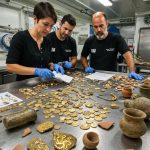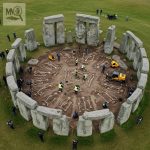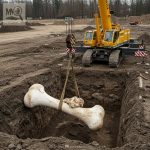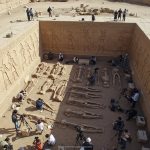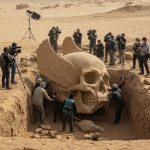The Forgotten King Drenched in Gold: Unearthing a Lost Legacy
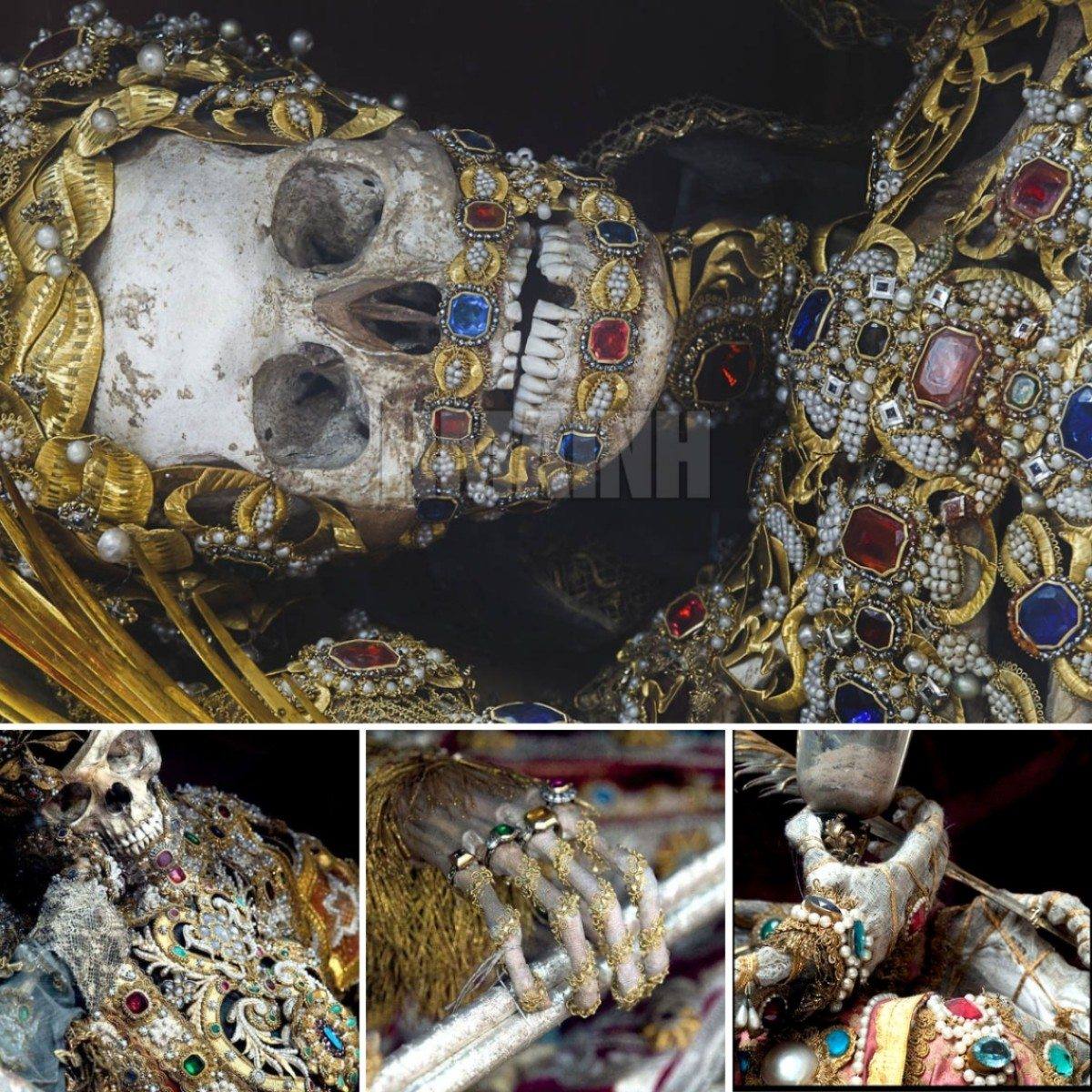
History has a way of hiding its greatest secrets, only to reveal them centuries later in the most breathtaking ways. Recently, archaeologists made a discovery that has stunned historians and enthusiasts alike: the tomb of a forgotten king, entombed for centuries and adorned in resplendent gold. This extraordinary find, from intricate jewelry to ceremonial regalia, offers a glimpse into a world long erased from memory, where power, prestige, and mystery intertwined in ways that continue to captivate us today.
A Tomb of Astonishing Splendor

The burial site, hidden beneath layers of earth and forgotten over time, preserves the majesty of a ruler whose story was nearly lost to history. Every artifact recovered from the tomb reflects meticulous craftsmanship and symbolic significance. Gold-plated masks, intricate necklaces, and ceremonial scepters suggest a monarch of immense wealth and influence, whose authority may have been considered divine. The glimmering treasures not only reveal the king’s opulence but also hint at the complex societal and religious structures of the era.
Archaeologists are particularly fascinated by the way this tomb challenges conventional narratives about forgotten rulers. Unlike well-documented kings whose legacies dominate historical texts, this monarch had seemingly vanished from recorded memory, leaving only whispers in the annals of history. The richness of his burial underscores a paradox: immense power and wealth paired with deliberate obscurity.
Questions That Rewrite History

The discovery raises profound questions. Who was this forgotten king? Was he a revered sovereign whose accomplishments were overshadowed by later dynasties, or a rival deliberately erased from historical records? Each artifact carries clues. Ceremonial robes, golden ornaments, and inscriptions provide tantalizing evidence of rituals, beliefs, and power structures, yet they leave much to interpretation. Historians must now reexamine existing records and archaeological evidence to reconstruct the story of a ruler once considered significant enough to merit such an extravagant tomb.
The implications extend beyond one individual. This find forces scholars to reconsider the social and political dynamics of the ancient civilization that created it. It hints at conflicts, succession struggles, or cultural shifts that may have influenced why this king was intentionally forgotten, even as his treasures remained, hidden beneath the earth for centuries.
A Legacy Unearthed
The unearthing of this golden king serves as a vivid reminder that history is not static; it evolves with every discovery. Museums and research institutions around the world are now eagerly examining the artifacts, seeking to understand the craftsmanship, symbolism, and societal implications of the king’s reign. The tomb also offers a powerful visual and emotional impact, reminding us of humanity’s enduring fascination with wealth, power, and the mysteries of the past.
Conclusion
The forgotten king drenched in gold is more than a burial—it is a bridge across centuries, connecting us to a past filled with opulence, authority, and enigma. This discovery not only celebrates human ingenuity and artistry but also challenges our understanding of ancient civilizations, revealing the delicate balance between memory, legacy, and the passage of time. As archaeologists continue to study the site, the story of this lost king promises to reshape history, inviting us to explore the mysteries long hidden beneath the sands of time.
